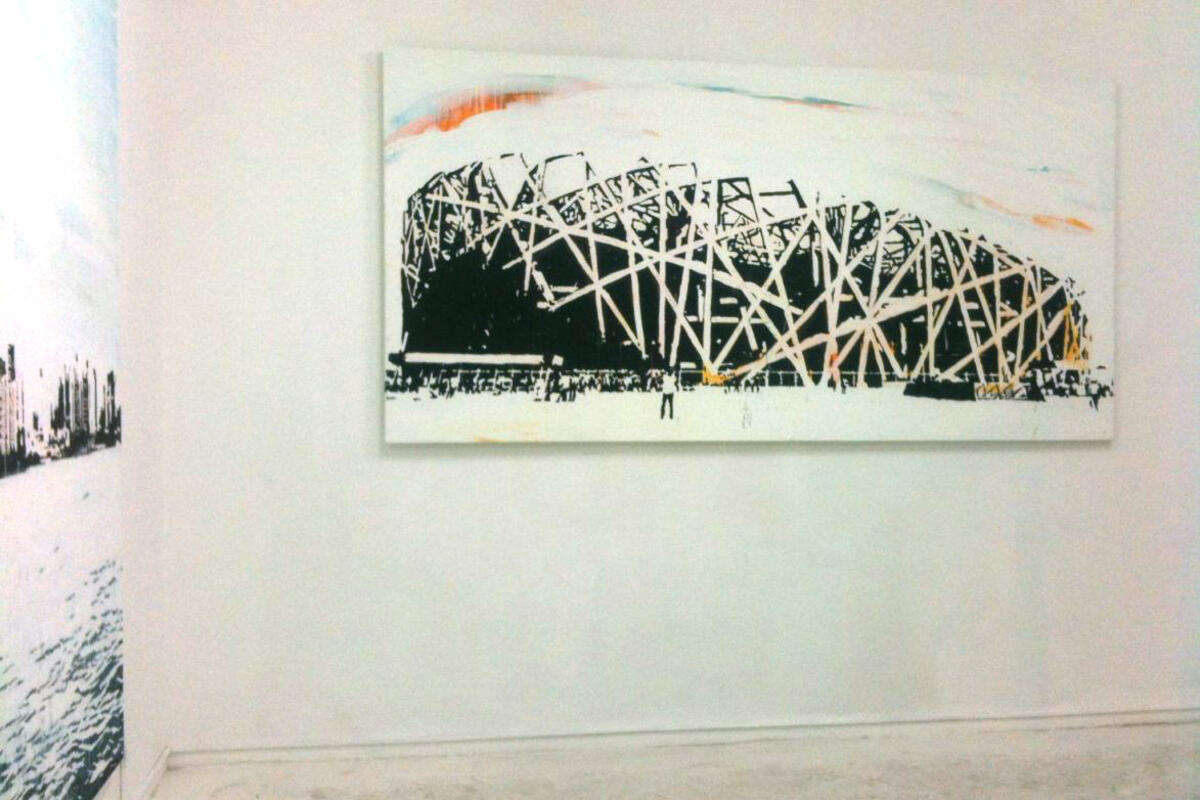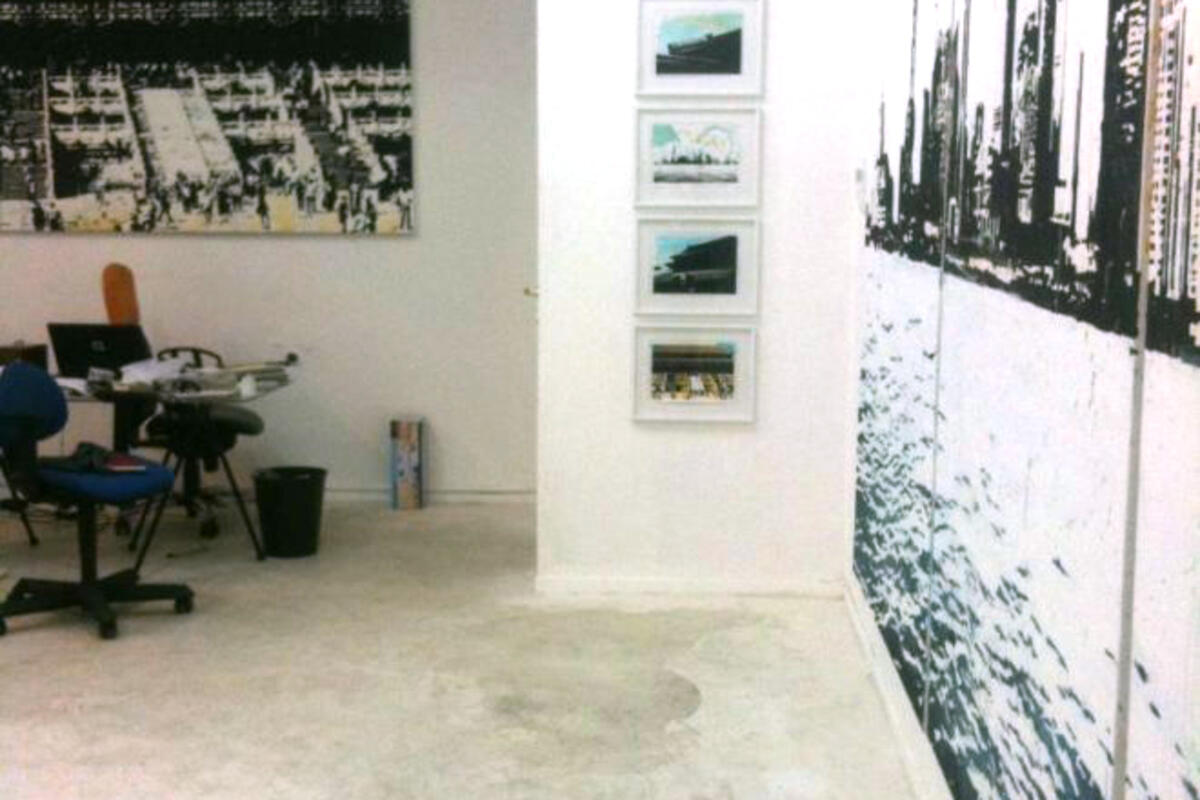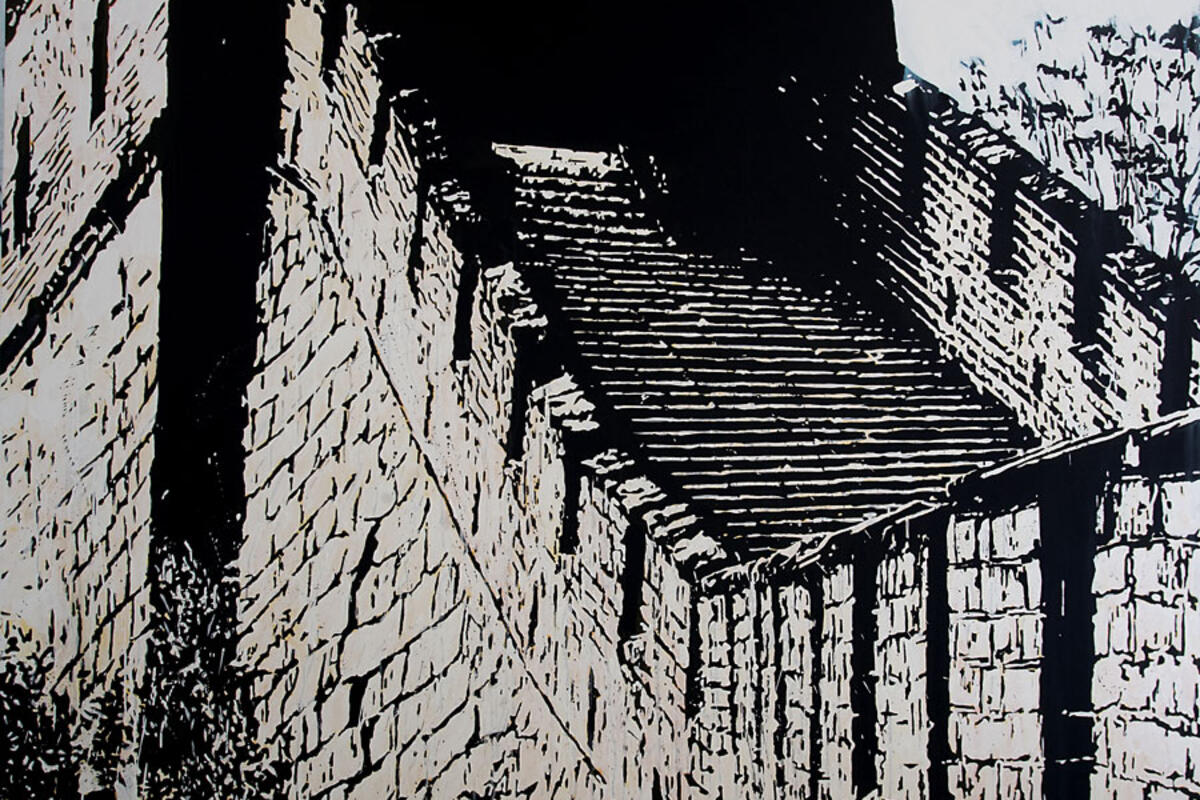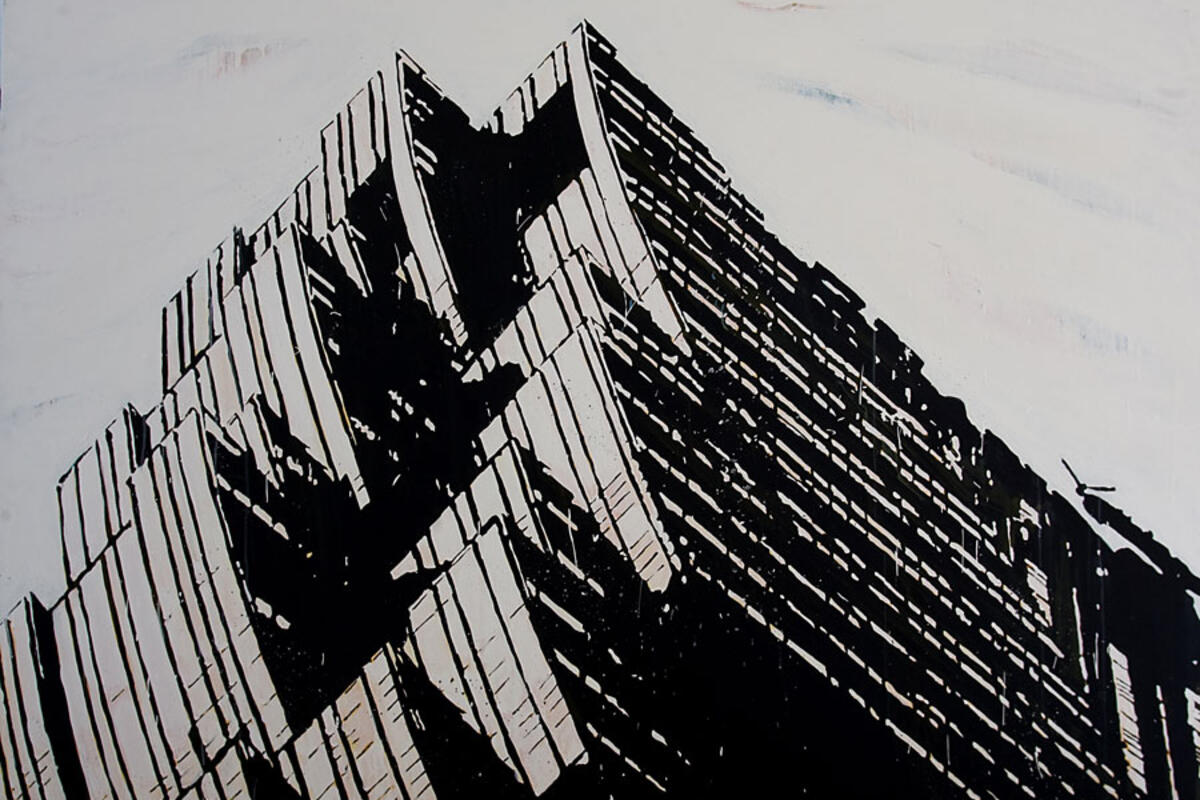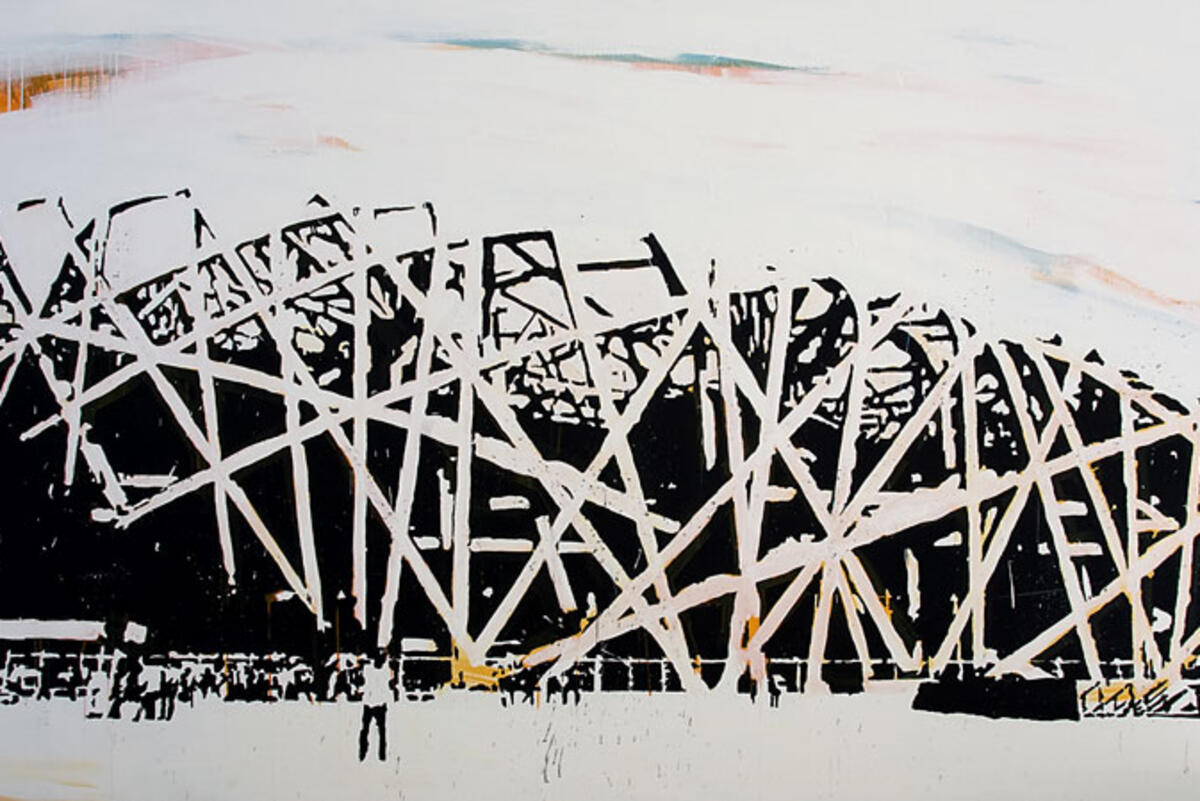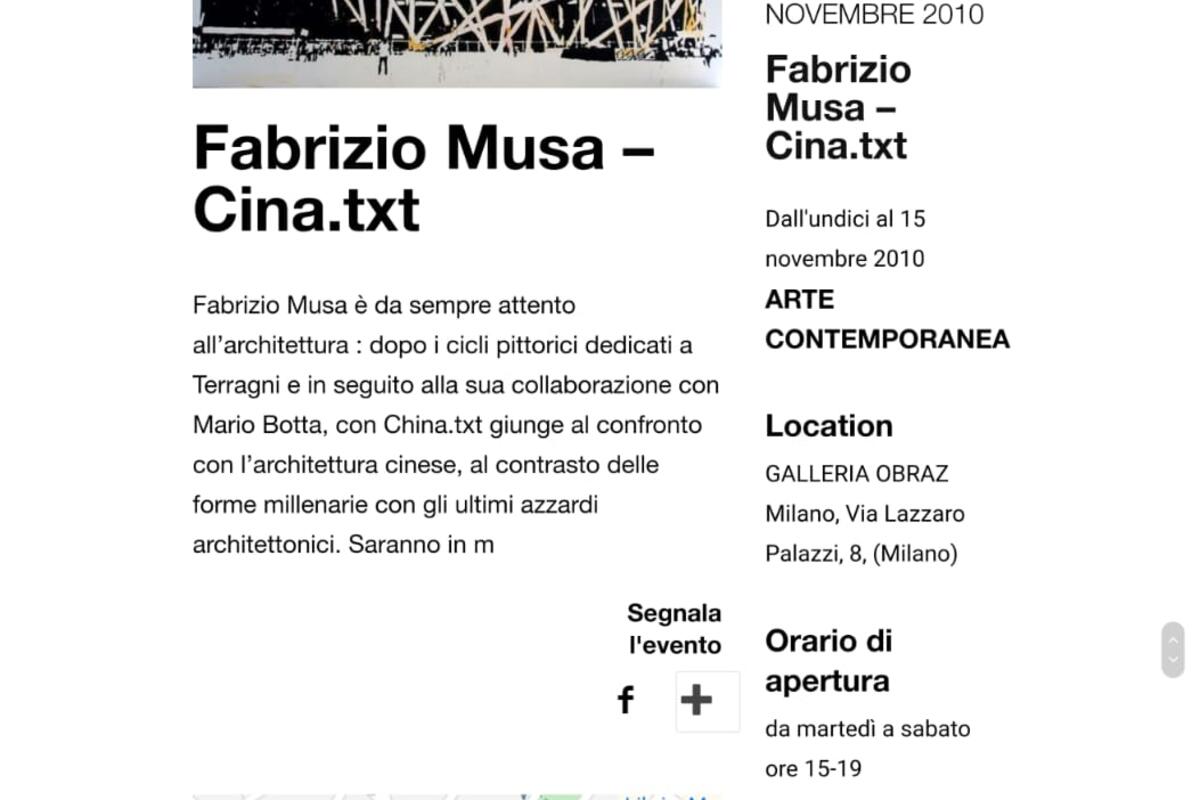MILANO _ GALLERIA OBRAZ "CHINA.TXT"
INTERVIEW BY EMMA GRAVAGNUOLO
China.txt is a very specific project. The selection of paintings, on display in the Obraz space, creates a coherent body of work and a particular atmosphere. Can you tell me something about the process behind this choice?
It all started with the decision to go to China and from the very beginning the trip was conceived as an in-depth study not only of this vast and still partly mysterious country, but as a research on architecture in very fast evolution in the East. I wanted to compare some of the oldest and best preserved architectures on earth with the most futuristic ones.
You have selected many landscapes - architectures, empty spaces, almost abstract external places - and only two canvases where man is present. But in both cases these works involve the feeling of absence and the idea of painting as a specific practice ...
As I told you, for this project, architecture was at the center of my research, while the human figure was in the background. Even if in some canvases, such as the one representing the Forbidden City or the "Bird's nest" (the new, gigantic Olympic stadium in Biejing), the presence of man in the image was necessary precisely to give a reference for comparison, to make the majesty of such buildings.
The perspectives of some buildings are extreme, the facades are taken up by oblique views, other details from below ...
I always try to capture details and shots that are not "simple" ... I generally rely on instinct, on the moment in which I relate to the specific architecture, I let myself be guided by the shots that most strike my imagination. I try to see that image already, that glimpse as they would be represented on the canvas. I take the photo to memorize it, to be able to work on it once back in my studio in Como.
Your works are born from a photograph or, less often, from a video frame. What relationship does your work have with the image as an iconography? I ask you because since postmodernism, painting has had to do with eclecticism, style, surface, while in your work there is a substantial attention to images as specific forms.
Photography is a fundamental step in my research. I always travel with my camera and I live every photo according to the work that could possibly be born. Choosing the right image means you are already at an excellent point for the realization of the picture that will be born. The more the years pass, the more the experience grows, the more the photos are absolutely aimed at their final purpose. Studying the architecture, the lines, the spaces, but above all the lights and shadows are fundamental for the realization of the work painted on canvas. This is why I also try to choose times of the day when the shadows are more accentuated, the shapes of the building are redesigned by the sun and light.
Each cycle of works dedicated to places is always preceded by a "preparatory journey" that allows you to have the material to then create the canvases in the studio. What is your relationship with photography? What does a building, a landscape, a church have to have to interest you?
It has to get my attention. There is no particular canon that occurs every time. It can be ancient or very modern architecture, in metal or stone ... My eye and my camera must see the picture that will be born. At that moment I shoot and start studying the projects of the paintings from the images made.
And in particular for China.txt, which places did you choose? I noticed the most common ones, such as the Great Wall, but also unexpected views ...
In China I really wanted to represent the contrasts and contradictions of such a vast country ... I toured the countryside and large cities, from rice fields and peasant houses of ancient times to the Beijing Olympic stadium by Herzog & de Meuron.
How many photographs do you take for a single subject? How do you realize that the image is the "right" one to then be brought to canvas?
I take fewer and fewer images and more and more targeted, although I always need a dozen photos for each building, perhaps taken at different times of the day to study the different impact of light on shapes.
What are the steps in your research path?
The first step is the identification of the channel on which the study and in-depth analysis will then focus. Then I go in person to take photos trying to make the idea of what I want to represent as much as possible. Then there is the part of studying and choosing the right image through the computer. I reduce the black and white photo by enhancing the contrasts and trying to reduce it to the essence of black and white pixels. At this point the pictorial work begins, first with a drawing on the canvas, taking the original image as a reference, then with the drafting of a series of colors, to then intervene again with black and white reducing as much as possible any part that is not I believe it is necessary for the purposes of representing the subject. Let's say it is a work on the synthesis of the image ... but it is a synthesis that gives, and not takes away. In fact, in this case it accentuates the effect of light and shadows on the structure of buildings on the architecture, often revealing details that cannot be grasped with the naked eye.
Your relationship with color?
Color is fundamental in my paintings, it gives depth and matter to the canvas, it leads to distinguish the architecture from the background, from the skies ... even if most of the time, after having spread it I tend to cover it to bring everything back to an image a little more detached from reality. In practice, color is always perceived, even in a totally black and white canvas.
You have chosen very large formats. It is a courageous choice: obviously large canvases are more expensive and it is more difficult to find a place for them ...
Of course, and I am aware of it, but I think it renders the idea much more, it represents the subjects better and I can work in more detail with very large sizes. The impact in an exhibition or in a house is also greater.
A few words about the triptych with the Shanghai skyline ...
It is one of the images that struck me the most during the whole trip through China and I spent several hours observing it. From early afternoon to late evening taking photos at different hours of the day and night. Like any metropolis, the ensemble of large buildings, the thousands of lights, the Huangpu River with commercial and tourist traffic and the modern financial district of Pudong are fascinating ... I wanted to create a large triptych of four and a half meters by three, just for try to represent the grandeur of that absolutely breathtaking panorama, among the most beautiful skylines in the world together with Hong Kong, New York and a few other cities.
When do you decide that a painting is finished?
Sometimes never. Maybe I keep these paintings to myself in such a way that when I understand what can be retouched I have the opportunity to do so, maybe even after a year or more.
Have you ever destroyed paintings that didn't convince you?
This has never happened, but I believe precisely due to the fact that an image from which I then create the paintings is studied in detail even before the painting is made. I happened to cover colored skies that did not convince me or even to redo parts of the canvases several times until they gave me the certainty of representing 100% what was in my mind even before starting.
Which masters have impressed you the most?
Undoubtedly Andy Warhol. Pop art remains my point of reference. I think it also catches on in my most recent works.




